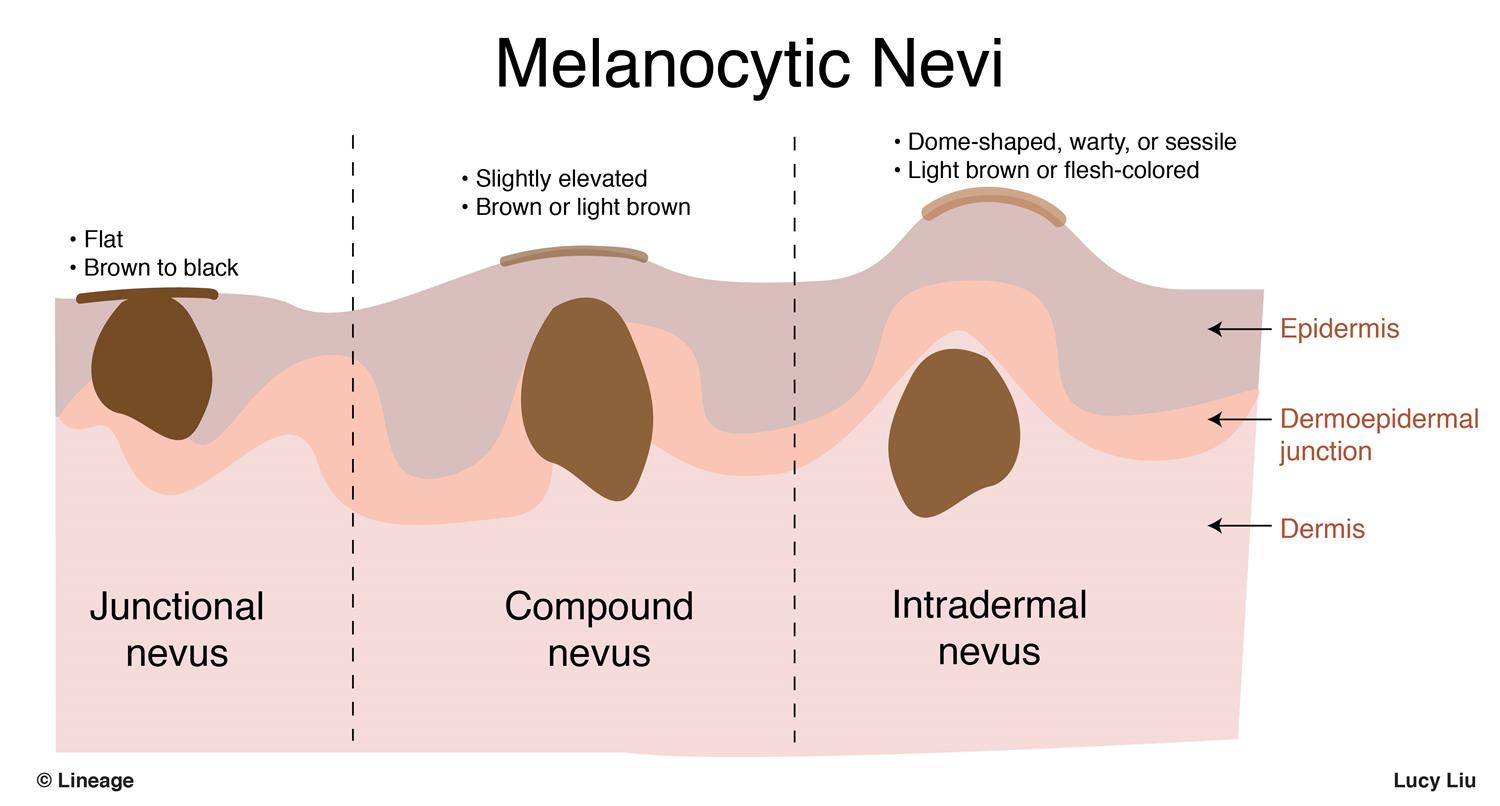In Singapore, mole removals are one of the most common medical aesthetics procedures. Even young patients that are relatively satisfied with their appearance often have a couple of pesky moles that they want to get rid of. How should you get the best mole removal? And how much will it cost in Singapore?
What are Moles?

Moles are actually benign tumours containing nests of pigment-producing cells at various depths in the skin. As the mole grows deeper into the skin, it becomes more and more raised and its colour changes from dark brown to blue-grey.
Why Remove Your Moles?

A prominent mole may be mistaken for an insect or be regarded as bad luck. Often, patients may have endured years of teasing during school, unsolicited comments from relatives at gatherings, or awkward stares from strangers on the street. Or they may feel that particular moles are bad luck or distract people that they are talking to. Some particularly protuberant moles may even get in the way of shaving, vision or securing a hot date.
Small wonder then, that moles can lead to self-consciousness, loss of confidence, low self-esteem, stress in social situations, feelings of inferiority, and even depression. While other people may argue that you shouldn’t let your external appearance affect how you feel inside, these well-meaning people wouldn’t understand how you feel to be referred to as ‘the person with the mole(s)’.
Patients often waste a lot of time and money trying to conceal these blemishes every day. Some moles may even be too big or obvious to hide with make-up or hairstyles. Not surprisingly, many patients seek ways to get rid of their birthmarks permanently and safely.
How to Choose Mole Removal?

With the proliferation of beauty salons touting $10 mole removal ‘lasers’, home use devices you can buy off Lazada/Taobao (some even tout themselves as ‘pico lasers’) and even medical aesthetics clinics aggressively advertising cheap mole removals, what should you been looking out for?
Common concerns about mole removal are:
- Will it leave a scar?
- Will the mole be gone forever?
- How much will it cost?
In other words, how to get the best mole removal?
The best mole removal would completely remove all the abnormal mole cells while sparing all the normal tissue. This would minimize the skin defect, resulting in minimal or non-existent scarring that is inconspicuous.
Why Laser Mole Removal
In my opinion, this is why cryosurgery (freezing off the mole), mole removal creams/acids (burning off the mole chemically), or electrocautery (burning off the mole with electric current/heat) aren’t the best options for mole removal. They are relatively non-specific making it difficult to control the amount of tissue destruction and ensure complete elimination of the mole cells while avoiding excessive collateral damage.

Using lasers, we can very precisely target the mole cells for the highest chance of complete removal. Which is the best option? It is important to understand that there is no perfect solution. Each laser has its pros and cons. It is important to have a range of options available, as well as a detailed assessment by an experienced doctor to recommend the most optimal approach.
Mole Removal with Ablative Lasers
Ablative lasers, such as carbon dioxide (CO2) or erbium-yttrium:aluminum:garnet (YAG) lasers, have high absorption in water and thus ablate or vaporize tissue. With an ablative laser for mole removal, we use the laser to remove the mole tissue layer by layer under direct vision.
Erbium-YAG lasers have higher absorption in water and remove less tissue per pass with less heat deposition compared to the traditional CO2 laser, making it slightly better for superficial ablation. However, for deeper ablation, this lack of heat deposition can instead be a drawback as there is more bleeding the deeper in the skin we go. Bleeding obscures the vision, slowing down the procedure and making it more difficult to differentiate normal tissue and mole cells.
In contrast, the heat deposited by a CO2 laser helps by coagulating blood vessels, ensuring a clean, bloodless field that would allow clear visual assessment of the degree of mole clearance as well as the depth of ablation. Furthermore, the thermal coagulation may ensure more complete destruction clearance, preventing recurrence. One drawback is that traditional continuous beam or normal pulsed CO2 laser deposits too much collateral heat, resulting in increased risk of pigmentation changes or even scarring.
Ultrapulse CO2 may offer the best of both worlds as the extremely short pulses produce mostly ablation with some coagulation, enabling very precise visualization and control during mole removal surgery.

Ablative laser prices vary from clinic to clinic and generally start from $50-100 per mole depending on the size, location and number. Basically, the more difficult and more time consuming it is, the more it will cost. It can go up to $500-600 or more for really complex cases.
Mole Removal with Pigment Lasers

Pigment lasers, such as alexandrite, ruby or neodymium-YAG (NdYAG), are absorbed mostly in melanin (the brown pigment that gives skin its colour). The longer the wavelength, the lower the melanin absorption but the higher the penetration, and this guides our selection as to which pigment laser would be suitable. Pigmented mole cells contain more melanin than surrounding cells and hence absorb more laser energy, converting it into heat damage. Thus pigment lasers selectively destroy pigmented mole cells.
As there is less destruction of skin architecture, pigment lasers generally have less risk of scarring than ablative lasers. However, as laser energy is scattered as it penetrates into skin, deeper mole cells may not be completely destroyed. Therefore, pigment lasers are usually useful only for relatively flat and small moles, and even then recurrence rates seem to be higher than with ablative lasers, albeit with lower scarring risks.
Pigment laser prices also vary from clinic to clinic, generally starting from around $50 per mole up to $400-500 for really large ones, with the obvious drawback being that they more frequently need repeat procedures and are really only suitable for flat moles that are not too deep. One area in which pigment lasers may be better than ablative laser is for flat but large moles where pigment laser may have less risk of scarring
Hybrid Laser Technique

This technique sees the usage of the ablative laser to debulk or reduce the thickness of the mole, followed by cleaning up the deeper residual mole with the pigment laser. While the clearance is not as complete as an ablative laser, it avoids excessive deep tissue destruction while still allowing better penetration and clearance than pure pigment laser alone.

However, this technique requires more judgement on the part of the doctor as to which point to switch lasers to have the best balance of scarring vs clearance. Too early and the remaining mole may be too thick for the pigment laser to penetrate, too late and there would be an excessive risk of scarring. At the end of the day, using two lasers may not always be better than one. Judicious usage of the tools to the doctor's calibrated judgement is more important.
My Take on Mole Removals
Personally, my philosophy is to try and eliminate the mole as precisely and completely as possible within a single session while having an acceptable risk of scarring and recurrence.
Simple moles

These are relatively thin, flat close to the skin surface or small enough that the resultant wound would heal easily. Even though these are relatively 'simple', it does not mean that bad things can't happen. I prefer to use ultrapulse CO2 laser ablation as the destruction of mole cells is more complete and ablative lasers have a lower recurrence rate overall. The chance of scarring is low anyway. However, for patients that don’t heal well, scar very easily, or want an even lower risk of scarring, I would recommend pigment lasers as they can also yield excellent results with a lower risk of scarring and shorter downtime.
Complicated moles

These include deep (raised, lighter in colour), big, hairy or recurrent moles. I prefer surgical excision as I find the recurrence rate is much lower than laser removal. The resultant linear scar is often more cosmetically acceptable than the sunken atrophic scar produced with overzealous laser mole removal or in patients with poorer healing. However, for patients that are averse to surgical excision or wish to opt for a method which may not result in a linear scar, I would recommend combining the ablative and pigment lasers.
How to Get the Best Laser Mole Removal?

You should definitely not leave your moles at the mercy of your regular neighbourhood salon. Such delicate procedures should be left to your dermatologist, plastic surgeon or medical aesthetics doctor.
As I’ve alluded to earlier, choosing the most appropriate laser is important but only one factor in a successful mole removal. It is also important to be able to control the laser to cause the minimal amount of collateral necessary to ensure complete eradication of the mole. Hence it is important to have a wide range of laser techniques to choose the best approach from, magnifying loupes, polarized lighting to eliminate skin reflections and a meticulous doctor who will not rush the mole removal surgery.
Do you have more questions about mole removal? I’m always happy to share my knowledge and experience. Please feel free to drop me a message!
References
- WOLF, R., RONAT, J., & FEUERMAN, E. J. (1983). Minor Aesthetic Blemishes. The Journal of Nervous and Mental Disease, 171(7), 452–453.
- Roh MR, Eliades P, Gupta S, Tsao H. Genetics of melanocytic nevi. Pigment Cell Melanoma Res. 2015;28(6):661-672.
- Alshami, M. A. (2013). Long-pulsed 532-nm Nd:YAG laser treatment for small acquired melanocytic nevi in a single session: an 8-year study on 350 Yemeni patients. Journal of Cosmetic and Laser Therapy, 16(1), 14–20.
- Kono, T., Erçöçen, A. R., Chan, H. H. L., Kikuchi, Y., & Nozaki, M. (2002). Effectiveness of the Normal-Mode Ruby Laser and the Combined (Normal-Mode Plus Q-Switched) Ruby Laser in the Treatment of Congenital Melanocytic Nevi: A Comparative Study. Annals of Plastic Surgery, 49(5), 476–485.
- August, P. J., Ferguson, J. E., & Madan, V. (2011). A study of the efficacy of carbon dioxide and pigment-specific lasers in the treatment of medium-sized congenital melanocytic naevi. British Journal of Dermatology, 164(5), 1037–1042.
